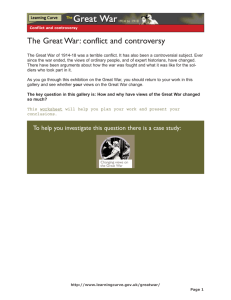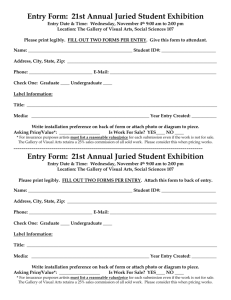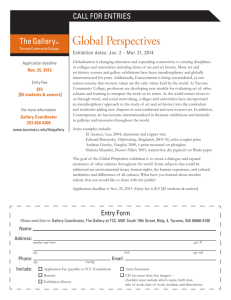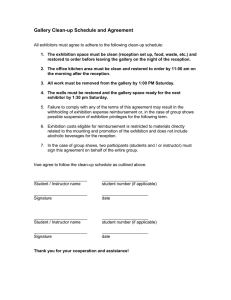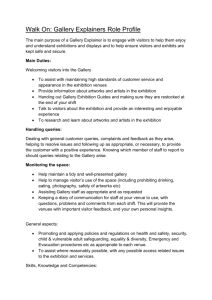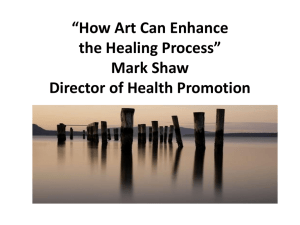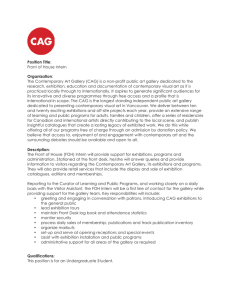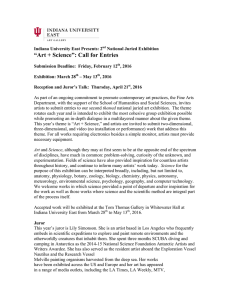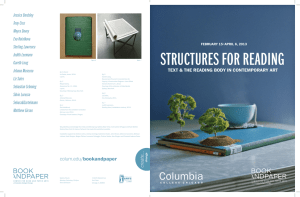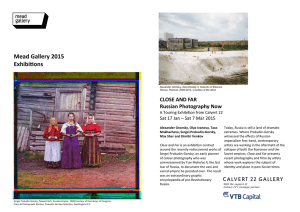News Release How to Construct a Time Machine
advertisement
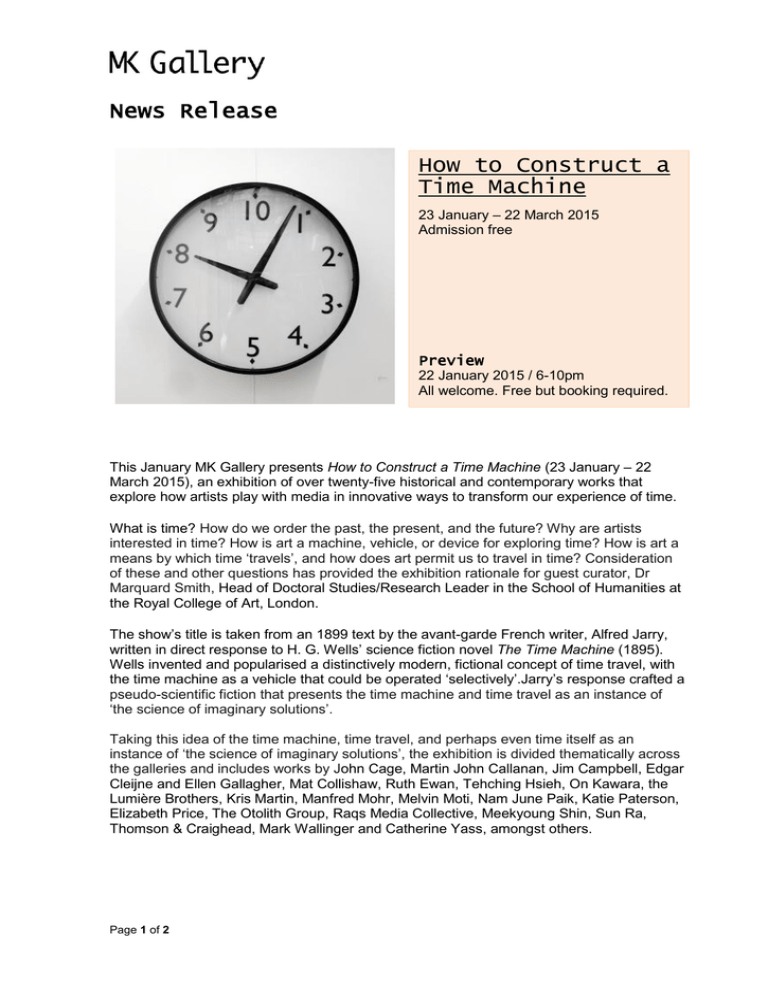
News Release How to Construct a Time Machine 23 January – 22 March 2015 Admission free Preview 22 January 2015 / 6-10pm All welcome. Free but booking required. This January MK Gallery presents How to Construct a Time Machine (23 January – 22 March 2015), an exhibition of over twenty-five historical and contemporary works that explore how artists play with media in innovative ways to transform our experience of time. What is time? How do we order the past, the present, and the future? Why are artists interested in time? How is art a machine, vehicle, or device for exploring time? How is art a means by which time ‘travels’, and how does art permit us to travel in time? Consideration of these and other questions has provided the exhibition rationale for guest curator, Dr Marquard Smith, Head of Doctoral Studies/Research Leader in the School of Humanities at the Royal College of Art, London. The show’s title is taken from an 1899 text by the avant-garde French writer, Alfred Jarry, written in direct response to H. G. Wells’ science fiction novel The Time Machine (1895). Wells invented and popularised a distinctively modern, fictional concept of time travel, with the time machine as a vehicle that could be operated ‘selectively’.Jarry’s response crafted a pseudo-scientific fiction that presents the time machine and time travel as an instance of ‘the science of imaginary solutions’. Taking this idea of the time machine, time travel, and perhaps even time itself as an instance of ‘the science of imaginary solutions’, the exhibition is divided thematically across the galleries and includes works by John Cage, Martin John Callanan, Jim Campbell, Edgar Cleijne and Ellen Gallagher, Mat Collishaw, Ruth Ewan, Tehching Hsieh, On Kawara, the Lumière Brothers, Kris Martin, Manfred Mohr, Melvin Moti, Nam June Paik, Katie Paterson, Elizabeth Price, The Otolith Group, Raqs Media Collective, Meekyoung Shin, Sun Ra, Thomson & Craighead, Mark Wallinger and Catherine Yass, amongst others. Page 1 of 2 Film work ranges from George Méliès’ A Trip to the Moon (1902), an iconic silent movie which follows a group of astronomers as they explore the moon, to Thomson & Craighead’s The Time Machine in alphabetical order (2010), a complete rendition of the 1960s film version of the Wells’ novella re-edited into alphabetical order. Sculptural work includes Mark Wallinger’s Time and Relative Dimensions in Space (2001), an aluminium version of Dr Who’s ‘Tardis’ police box that simultaneously disappears into the space-time continuum and reflects its own surroundings, and Ruth Ewan’s We Could Have Been Anything That We Wanted to Be (2012), a decimal clock which divides the day into ten (rather than twenty-four) periods, echoing a bold 18th century French Republican attempt to redefine and rationalise the day. The exhibition will be accompanied by a catalogue, designed by Herman Lelie, featuring an extended Introduction by the exhibition’s curator and a translation of Jarry’s How to Construct a Time Machine, together with essays by Dutch cultural theorist and video artist Mieke Bal and radical philosopher Peter Osborne. The exhibition will be supported by a range of related events including tours by the curator and artists, seminars, academic conferences, and film screenings. Exhibition Supporters Supported using public funding by the National Lottery through Arts Council England MK Gallery Supporters MK Gallery receives core funding from Milton Keynes Council and Arts Council England South East. Image overleaf: Ruth Ewan, We Could Have Been Anything That We Wanted to Be (2012) MK Gallery MK Gallery, 900 Midsummer Boulevard, Central Milton Keynes, MK9 3QA. Admission is free. Details at www.mkgallery.org Press information Please contact: Katharine Sorensen, Communications Director, MK Gallery. T: +44 (0)1908 558318 / E: ksorensen@mkgallery.org Ends / Date of issue: 13 Nov 2014 Page 2 of 2
